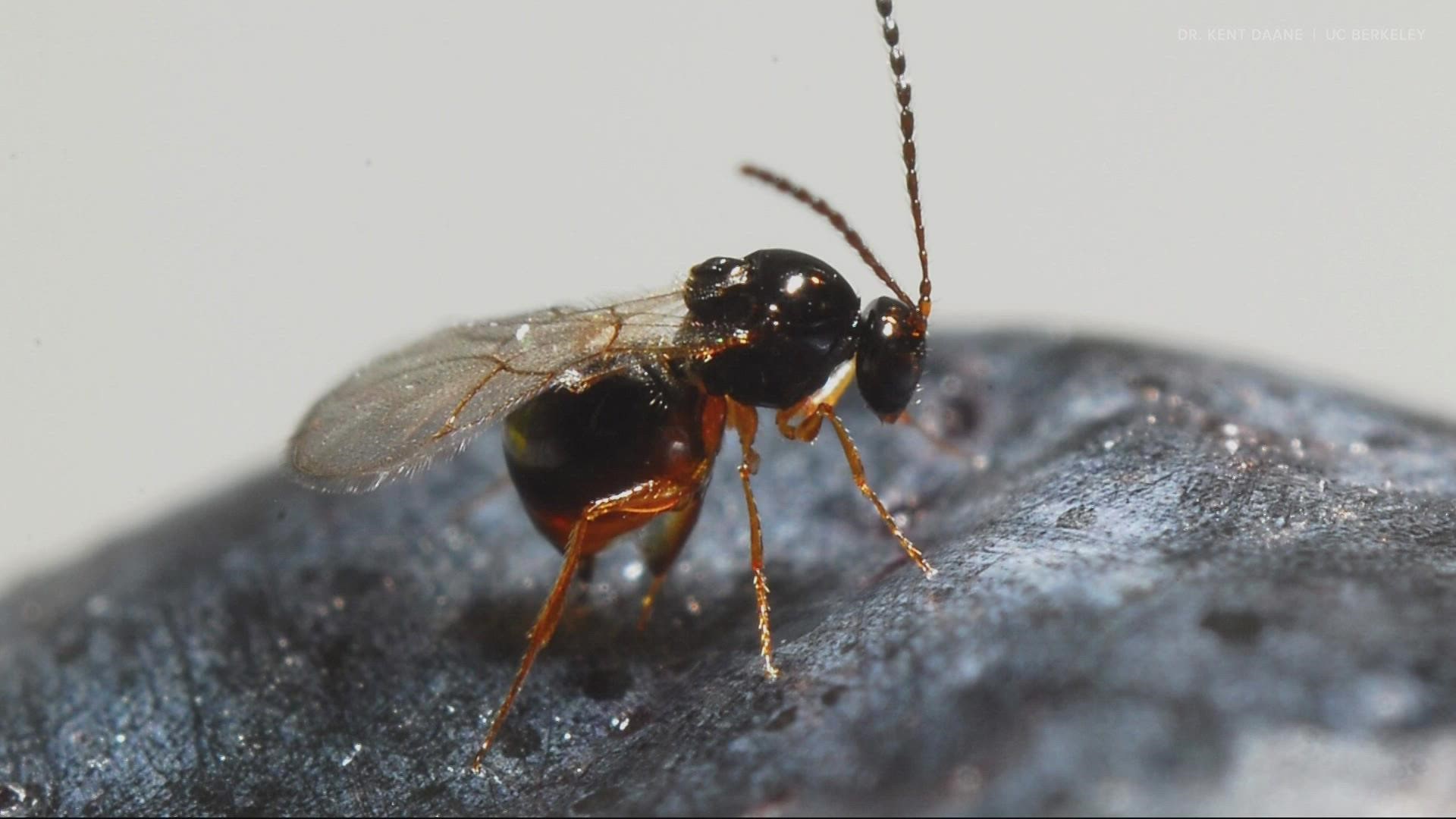CORVALLIS, Ore. — After about a decade of work, Oregon State University researchers and others have helped secure federal approval to release a tiny species of wasp to combat an invasive fruit crop pest.
Vaughn Walton, OSU Extension entomologist and professor in the College of Agricultural Sciences, grew up in an agricultural family in South Africa.
"Growers are continually being affected by things all over," Walton said. "You're just working nonstop to survive."
He saw firsthand the delicate balance of pest control and environmental impact, inspiring him to pursue his career in science.
Over the last decade, he and researchers around the world have collaborated to tackle issues brought on by the spotted wing drosophila, an invasive fruit fly from Asia that appeared in Oregon in 2009.
"Causes tremendous damage on a yearly basis," Walton explained.
The tiny pest differs from the common household fruit fly by ruining crops from the inside. The spotted wing variety injects its eggs into berries and fruit. Larvae hatch, then eat through the fruit, costing U.S. farmers about $500 million annually.
Walton said pesticides have kept the industry alive up until now, but are no longer as effective.
"We're getting our first signs of insecticidal resistance," he said.
Walton joined researchers and growers around the world in taking on the problem. They found a common predator of the fruit fly could be a natural answer: Ganaspis brasiliensis.
The insect is a tiny parasitic wasp that can sense spotted wing drosophila larvae in fruit and inject its own eggs into the larvae, reducing the fruit fly population.
The years of research helped determine the wasp would not endanger any other native species if it were to be introduced outside of Asia for pest control purposes.
And now, the U.S. Department of Agriculture (USDA) has permitted release of the wasps, which are being cultivated in part by OSU labs.
"We think it's going to be beneficial all around," Walton said. "Not just to the environment and to the growers and their profit levels as well."
Walton's research included trips to sites in the U.S., China, Korea and Japan, helping bridge the gap for a natural solution.
"Without those friends we have made over all those years, we wouldn't have been here today," he said. "That dream of being able to make a difference is amazing."
He said labs will release the wasps around crops in Oregon and several other states this year. Scientists will then monitor impacts over the next 2-3 years.

